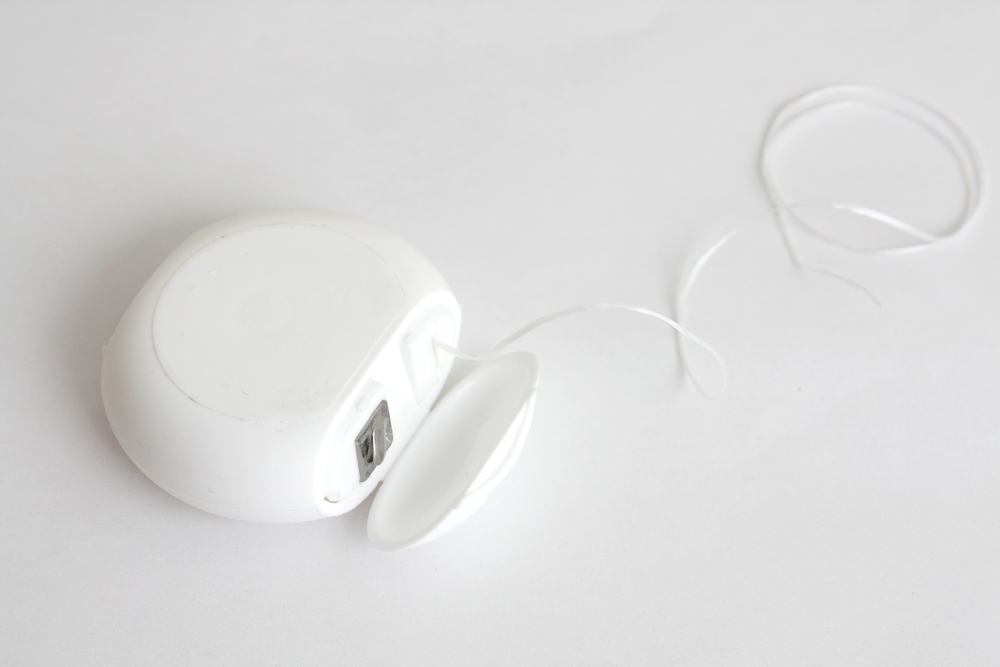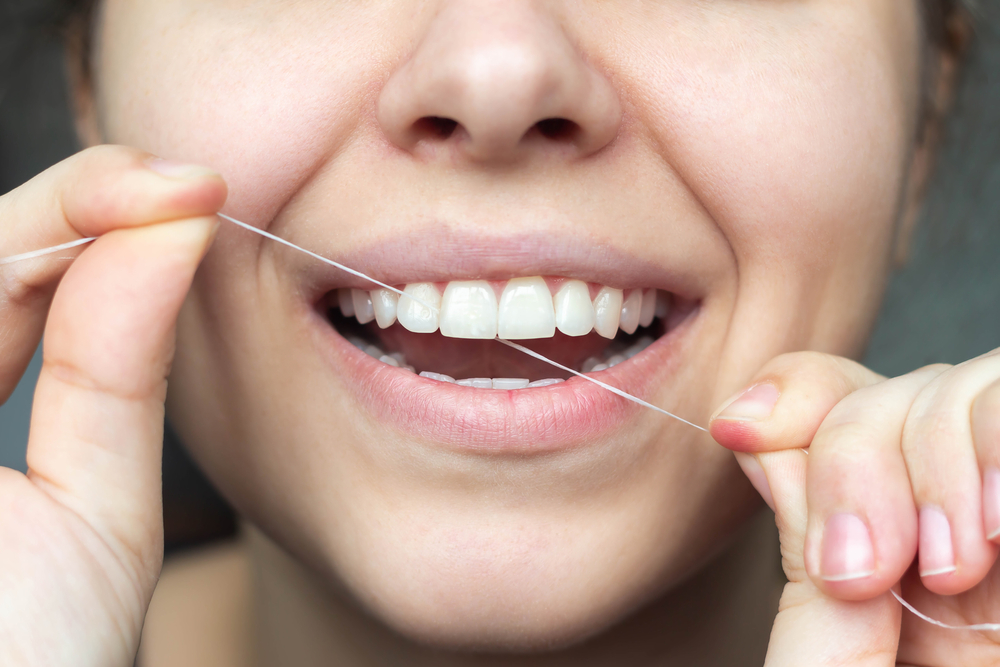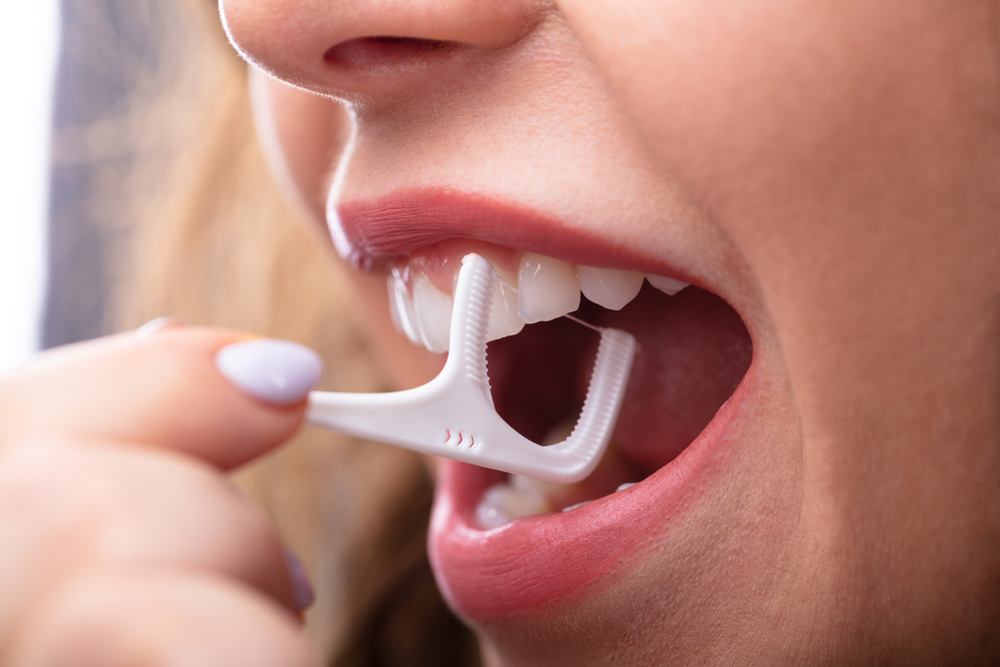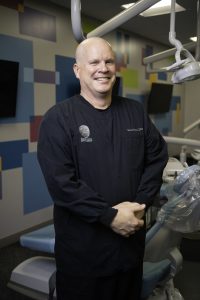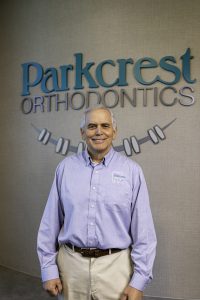Parkcrest Dental Group wants you to have healthy teeth and gums, which includes following good oral hygiene habits. One of the things you can do to maintain your beautiful smile is to floss your teeth once or twice a day.
Our dentists in Springfield, Missouri, answer several frequently asked questions about dental floss and why it’s important for your health.
What is dental floss?
Dental floss is a thin cord made of several filaments wound together that is narrow enough to get in between your teeth.
What is dental floss used for?
Floss removes food particles, dental plaque, and bacteria from in between your teeth.
What types of dental floss are there?
You have five main choices when it comes to floss:
Unwaxed floss, usually composed of about 35 strands of Nylon strands twisted together. It fits into tight spaces in between teeth.
Waxed floss has a light wax coating to make it easier to glide along your teeth, but the extra layer may make it harder to navigate tight spaces.
Dental tape is broader and flatter than standard dental floss. This type of floss works well for people with more space between their teeth.
Polytetrafluoroethylene (PTFE) floss is made of a stronger material than standard floss, and it also slides very easily between teeth.
Super floss has stiffer sections on each end, so you can clean around braces or dental bridges.
How often should I floss my teeth?
At least once per day.
How do I use dental floss properly?
- Wind about 18 inches of floss around your middle fingers. One finger should have more floss than the other, so you can wind the floss on the other finger as you progress.
- Use your thumbs and forefingers to guide around 1 inch of floss between two teeth at a time.
- Hold the floss firmly.
- Use a gentle sawing motion between the teeth.
- Curve the floss into a C-shape (as you look from above) on one tooth.
- Gently slide the floss back and forth, going up and down the tooth.
- Switch to the tooth next to it.
- Then move on to the next tooth, and so on and so forth, until you floss all of your teeth.
Should I floss or brush first?
Floss first because any bacteria or food dislodged by the floss will be further swept away by the toothbrush and toothpaste. This takes away more bacteria and makes your mouth cleaner.
Should children use dental floss?
Yes, even though the teeth will fall out eventually to make room for adult teeth. Making sure your child’s teeth stay healthy all the way until the adult teeth come in can help your child have more confidence, eat better, and act as placeholders for adult teeth.
When should children first use dental floss?
As soon as teeth start to get close together, usually between ages 2 and 6. Developing the habit of flossing at an early age helps your child maintain good oral hygiene well into adulthood.
How can I help my child learn good flossing habits?
Show how to floss your child’s teeth by doing it for them until they are ready and have the fine motor skills necessary to manipulate the dental floss.
How do I get my child to floss?
- Show your child the right way to floss.
- Floss your own teeth because a child will mimic your behavior.
- Floss together to make it a fun family activity.
- Turn flossing into a game, and use a chart to track progress with a reward once your child reaches a certain point.
- Let your child pick the floss by walking through the floss section of your local retail store.
- Ask your pediatric dentist for tips.
What do I do when my floss keeps breaking?
You can do a few things to keep your dental floss from breaking:
- Use dental floss instead of floss picks.
- Purchase top-rated floss.
- See a dentist to possibly fix any problems that cause the broken floss, including a broken filling, tooth decay, a chipped tooth, or tartar buildup.
Can I floss with braces?
Yes, in several ways:
- String traditional floss behind braces with a special threading tool.
- Use an interdental brush to reach in between teeth.
- An electric water flosser.
- Special orthodontic floss that reaches behind the braces.
Are there alternatives to traditional dental floss?
Yes, including:
- Interdental brushes, which have a long handle and an end that can fit between teeth.
- Water flossers use a steady stream of water in between your teeth to clear away plaque, bacteria, and food particles. These small appliances are electronic.
- Dental picks are made of plastic or wood, and they get in between teeth much like a toothpick.
- Pre-threaded floss allows you to floss with one hand instead of two.
- Floss picks also allow you to floss with one hand. They have a small plastic handle and a small bit of floss between two prongs. There is no winding of floss on your fingers, and floss picks may be easier if you have mobility issues with your hands.
Why should I floss my teeth?
Cleaning in between your teeth with dental floss may help prevent cavities, gum disease, and dental plaque.
What may happen if I don’t floss my teeth?
Not using dental floss daily may cause a few problems that develop over long periods of time, including:
- Bad breath due to poor dental hygiene.
- Buildup of plaque and tartar. Plaque is the sticky film of bacteria buildup on your tooth’s surface. When plaque stays in place for a long time, it may harden into tartar. Tartar is very hard to remove, and it can trap even more bacteria in between your teeth.
- Tooth decay and cavities. Food particles build up between your teeth, which may cause bacteria to feast upon them. The leftovers of the bacteria create an acidic environment that slowly erodes the enamel on your teeth. Once the enamel erodes, you might have tooth decay or cavities in between your teeth if you don’t floss regularly.
- Gingivitis, or swelling of the gums. This condition is indicated by inflamed, red, or sore gums.
- Gum disease or periodontitis, which is an advanced form of gingivitis, can cause bacteria to eat away at your gums and then the bone that holds your teeth in place. If your adult teeth are starting to feel loose, visit your dentist immediately.
- Tooth loss, in extreme cases.
Who can give me tips for how to use dental floss properly?
Parkcrest Dental Group in Springfield, Missouri, can give you and your family tips on how to properly use dental floss for the best possible dental hygiene. Contact Parkcrest Dental or call (417) 887-1220 for more information or to make an appointment with us.

